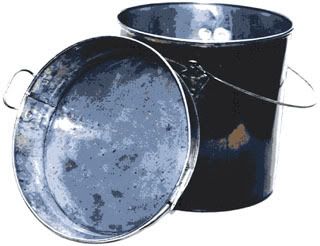I've been wondering for some time about camp kettles and other cooking gear. Not the kind that a person would carry while going solo but the kind used in camps of several people or in a military mess. My point of reference is the British Army and I've found a bit of information that I'm hoping others will be able to expand and possibly use.
Regarding camp kettles, I've found some definitive information and a lot of holes. During the Revolution, there are records of issuing sheet iron camp kettles that were carried by the men. Which leads me to believe that the iron camp kettles used by the British Army during the Napoleonic period were cast. I arrived at this from the Army General Orders requiring the issue of mules to each company that were designated "camp kettle mules" for the exclusive use of transporting the iron camp kettles. There are also references to cooking meat on the lids. There are also several paintings and sketches from the period that illustrate round bottom three leg cast camp kettles similar to these.

Finally when the Army was ordered to turn in their iron camp kettles for tin camp kettles an order was issued to have the iron kettles put into storage after being repaired and made ready for use and provided with cradles.
The tin camp kettles bring up a whole set of new questions, what did they look like and how big were they. References to cooking meat on camp kettle lids just throws more questions about design into the mix. Some have suggested that they were like the HBC kettles sold at Crazy Crow like these which have a frying pan for a lid.

I have found a reference to the tin camp kettles being "Flanders Kettles" I then found a photo on the WEB of what is described as a Flanders Kettle but lost the site address.

If this is a Flanders Kettle then the references to cooking meat on the lid makes sense after the replacement of the iron camp kettles.
The next question is how big were they? I got that question answered when I found a copy of General Orders that stated camp kettles 7 pints in size were being used by messes of six men and that they were inadequate. New kettles 12 pints in size were to be issued to messes of six men and if they were not available then additional 7 pint kettles were to be issued and the size each mess was to be reduced four men.
Anyone with more information chime in please.
I've also given some thought to frying pans. I've read some discussion questioning the accuracy of the folding handle frying pan. There are also several paintings and drawings that illustrate what look like simple steel frying pans with long flat handles and even some with attached legs.
Anyone have any additional information to share on this subject.
Inquiring minds want to know. :? :?





